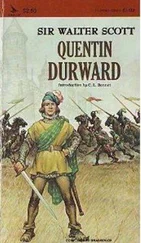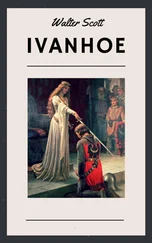Walter Scott - Letters on Demonology and Witchcraft
Здесь есть возможность читать онлайн «Walter Scott - Letters on Demonology and Witchcraft» весь текст электронной книги совершенно бесплатно (целиком полную версию без сокращений). В некоторых случаях можно слушать аудио, скачать через торрент в формате fb2 и присутствует краткое содержание. Жанр: История, на английском языке. Описание произведения, (предисловие) а так же отзывы посетителей доступны на портале библиотеки ЛибКат.
- Название:Letters on Demonology and Witchcraft
- Автор:
- Жанр:
- Год:неизвестен
- ISBN:нет данных
- Рейтинг книги:4 / 5. Голосов: 1
-
Избранное:Добавить в избранное
- Отзывы:
-
Ваша оценка:
- 80
- 1
- 2
- 3
- 4
- 5
Letters on Demonology and Witchcraft: краткое содержание, описание и аннотация
Предлагаем к чтению аннотацию, описание, краткое содержание или предисловие (зависит от того, что написал сам автор книги «Letters on Demonology and Witchcraft»). Если вы не нашли необходимую информацию о книге — напишите в комментариях, мы постараемся отыскать её.
Letters on Demonology and Witchcraft — читать онлайн бесплатно полную книгу (весь текст) целиком
Ниже представлен текст книги, разбитый по страницам. Система сохранения места последней прочитанной страницы, позволяет с удобством читать онлайн бесплатно книгу «Letters on Demonology and Witchcraft», без необходимости каждый раз заново искать на чём Вы остановились. Поставьте закладку, и сможете в любой момент перейти на страницу, на которой закончили чтение.
Интервал:
Закладка:
The national estimation of deities, concerning whom such stories could be told and believed, was, of course, of no deep or respectful character. The Icelanders abandoned Odin, Freya, Thor, and their whole pagan mythology, in consideration of a single disputation between the heathen priests and the Christian missionaries. The priests threatened the island with a desolating eruption of the volcano called Hecla, as the necessary consequence of the vengeance of their deities. Snorro, the same who advised the inquest against the ghosts, had become a convert to the Christian religion, and was present on the occasion, and as the conference was held on the surface of what had been a stream of lava, now covered with vegetable substances, he answered the priests with much readiness, "To what was the indignation of the gods owing when the substance on which we stand was fluid and scorching? Believe me, men of Iceland, the eruption of the volcano depends on natural circumstances now as it did then, and is not the engine of vengeance intrusted to Thor and Odin." It is evident that men who reasoned with so much accuracy concerning the imbecility of Odin and Thor were well prepared, on abandoning their worship, to consider their former deities, of whom they believed so much that was impious, in the light of evil demons.
But there were some particulars of the Northern creed in which it corresponded so exactly with that of the classics as leaves room to doubt whether the original Asæ, or Asiatics, the founders of the Scandinavian system, had, before their migration from Asia, derived them from some common source with those of the Greeks and Romans; or whether, on the other hand, the same proneness of the human mind to superstition has caused that similar ideas are adopted in different regions, as the same plants are found in distant countries without the one, as far as can be discovered, having obtained the seed from the others.
The classical fiction, for example, of the satyrs and other subordinate deities of wood and wild, whose power is rather delusive than formidable, and whose supernatural pranks intimate rather a wish to inflict terror than to do hurt, was received among the Northern people, and perhaps transferred by them to the Celtic tribes. It is an idea which seems common to many nations. The existence of a satyr, in the silvan form, is even pretended to be proved by the evidence of Saint Anthony, to whom one is said to have appeared in the desert. The Scottish Gael have an idea of the same kind, respecting a goblin called Ourisk , whose form is like that of Pan, and his attendants something between a man and a goat, the nether extremities being in the latter form. A species of cavern, or rather hole, in the rock, affords to the wildest retreat in the romantic neighbourhood of Loch Katrine a name taken from classical superstition. It is not the least curious circumstance that from this silvan deity the modern nations of Europe have borrowed the degrading and unsuitable emblems of the goat's visage and form, the horns, hoofs, and tail, with which they have depicted the author of evil when it pleased him to show himself on earth. So that the alteration of a single word would render Pope's well-known line more truly adapted to the fact, should we venture to read—
"And Pan to Satan lends his heathen horn."
We cannot attribute the transferrence of the attributes of the Northern satyr, or Celtic ourisk, to the arch-fiend, to any particular resemblance between the character of these deities and that of Satan. On the contrary, the ourisk of the Celts was a creature by no means peculiarly malevolent or formidably powerful, but rather a melancholy spirit, which dwelt in wildernesses far removed from men. If we are to identify him with the Brown Dwarf of the Border moors, the ourisk has a mortal term of life and a hope of salvation, as indeed the same high claim was made by the satyr who appeared to St. Anthony. Moreover, the Highland ourisk was a species of lubber fiend, and capable of being over-reached by those who understood philology. It is related of one of these goblins which frequented a mill near the foot of Loch Lomond, that the miller, desiring to get rid of this meddling spirit, who injured the machinery by setting the water on the wheel when there was no grain to be grinded, contrived to have a meeting with the goblin by watching in his mill till night. The ourisk then entered, and demanded the miller's name, and was informed that he was called Myself ; on which is founded a story almost exactly like that of OUTIS in the "Odyssey," a tale which, though classic, is by no means an elegant or ingenious fiction, but which we are astonished to find in an obscure district, and in the Celtic tongue, seeming to argue some connexion or communication between these remote Highlands of Scotland and the readers of Homer in former days, which we cannot account for. After all, perhaps, some Churchman more learned than his brethren may have transferred the legend from Sicily to Duncrune, from the shores of the Mediterranean to those of Loch Lomond. I have heard it also told that the celebrated freebooter, Rob Roy, once gained a victory by disguising a part of his men with goat-skins, so as to resemble the ourisk or Highland satyr.
There was an individual satyr called, I think, Meming, belonging to the Scandinavian mythology, of a character different from the ourisk, though similar in shape, whom it was the boast of the highest champions to seek out in the solitudes which he inhabited. He was an armourer of extreme dexterity, and the weapons which he forged were of the highest value. But as club-law pervaded the ancient system of Scandinavia, Meming had the humour of refusing to work for any customer save such as compelled him to it with force of arms. He may be, perhaps, identified with the recusant smith who fled before Fingal from Ireland to the Orkneys, and being there overtaken, was compelled to forge the sword which Fingal afterwards wore in all his battles, and which was called the Son of the dark brown Luno, from the name of the armourer who forged it. [21] [21] The weapon is often mentioned in Mr. MacPherson's paraphrases; but the Irish ballad, which gives a spirited account of the debate between the champion and the armourer, is nowhere introduced.
From this it will appear that there were originals enough in the mythology of the Goths, as well as Celts, to furnish the modern attributes ascribed to Satan in later times, when the object of painter or poet was to display him in his true form and with all his terrors. Even the genius of Guido and of Tasso have been unable to surmount this prejudice, the more rooted, perhaps, that the wicked are described as goats in Scripture, and that the devil is called the old dragon. In Raffael's famous painting of the archangel Michael binding Satan, the dignity, power, and angelic character expressed by the seraph form an extraordinary contrast to the poor conception of a being who ought not, even in that lowest degradation, to have seemed so unworthy an antagonist. Neither has Tasso been more happy, where he represents the divan of darkness in the enchanted forest as presided over by a monarch having a huge tail, hoofs, and all the usual accompaniments of popular diablerie. The genius of Milton alone could discard all these vulgar puerilities, and assign to the author of evil the terrible dignity of one who should seem not "less than archangel ruined." This species of degradation is yet grosser when we take into consideration the changes which popular opinions have wrought respecting the taste, habits, powers, modes of tempting, and habits of tormenting, which are such as might rather be ascribed to some stupid superannuated and doting ogre of a fairy tale, than to the powerful-minded demon who fell through pride and rebellion, not through folly or incapacity.
Читать дальшеИнтервал:
Закладка:
Похожие книги на «Letters on Demonology and Witchcraft»
Представляем Вашему вниманию похожие книги на «Letters on Demonology and Witchcraft» списком для выбора. Мы отобрали схожую по названию и смыслу литературу в надежде предоставить читателям больше вариантов отыскать новые, интересные, ещё непрочитанные произведения.
Обсуждение, отзывы о книге «Letters on Demonology and Witchcraft» и просто собственные мнения читателей. Оставьте ваши комментарии, напишите, что Вы думаете о произведении, его смысле или главных героях. Укажите что конкретно понравилось, а что нет, и почему Вы так считаете.









